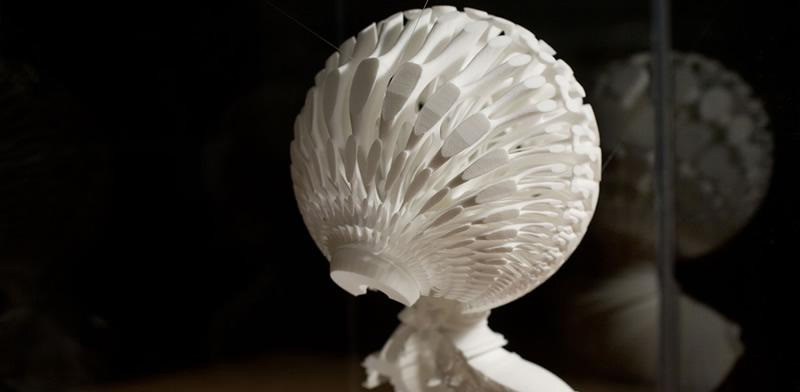The London Science Museum is breaking ground with its new 3D printing exhibition. Stratasys, the Israeli-American manufacturer of 3D printers, has announced that the museum will feature 150 3D printed miniature models of visitors in its exhibition, ‘3D: Printing the Future.’
The exhibition explores the process of 3D printing, from 3D scanning right through to the production of 3D models. The 150 statuettes were created from the scans of a selection of visitors who took part in the 3D scanning workshops run at the Museum by Digital Native Academy throughout August.
The museum will also feature ‘Pneuma 2,’ a stunning 3D printed sculpture inspired by the human lung designed by the widely acclaimed Israeli Professor Neri Oxman. The intricate piece combines a number of different material properties, 3D printed with Stratasys’ unique PolyJet technology which enables designers to 3D print multiple materials simultaneously in a single model without post-assembly.
“It is gratifying to see 3D printing featured so prominently by one of the world’s great science museums. Every day we are discovering exciting new applications for 3D printing, touching virtually every discipline and industry, from art and fashion to medicine, architecture and manufacturing,” says Arita Mattsoff, VP Marketing, Stratasys. “We hope that many visitors will take advantage of this opportunity to experience this amazing technology which is not yet leveraged to its full potential.”
The exhibit will feature a total of 700 3D printed objects produced by a range of materials including nylon, titanium, and sandstone.
According to a press statement, the exhibit explores ‘3D printing through the designers, engineers, scientists and hackers who are harnessing the potential of this technology to turn new ideas into real things.’
“3D printing is a hot topic right now and our exhibition aims to shine a light on the latest developments and discuss where the technology may take us in future,” says Pippa Hough, content developer, Science Museum.
“By displaying models of people in the exhibition, we aim to create a deeper engagement with our visitors. Those who were scanned can feel a physical connection with the exhibition. I hope to see lots of visitors trying to spot themselves once the exhibition has launched.”
The exhibition is free to visitors and open to the public from October 9.












